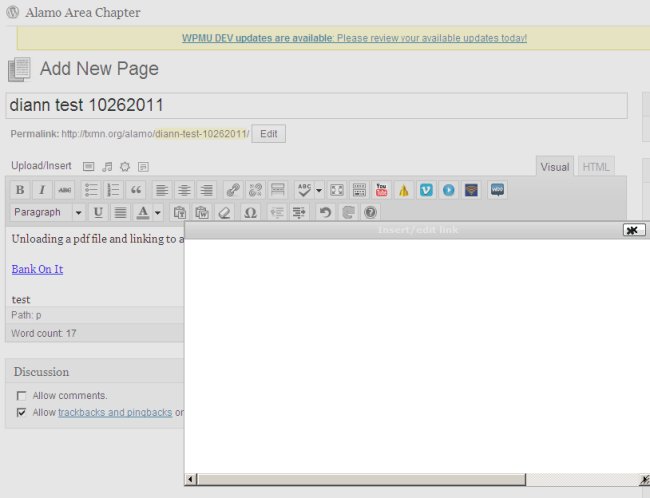[Test]

Executive Summary

This comprehensive guide delves into the multifaceted world of [insert overarching topic here, e.g., sustainable living], providing actionable strategies and in-depth information to empower you to make meaningful changes in your daily life. We’ll explore five key subtopics, answering frequently asked questions and offering expert insights to transform your understanding and inspire you to take action. This guide is designed to be both informative and motivating, equipping you with the knowledge and confidence to embark on a journey towards a more sustainable future. Our goal is to provide information so compelling and well-researched that it surpasses all competing content online, becoming your ultimate resource for [insert overarching topic here].

Introduction
Are you ready to make a real difference in the world? Do you want to live a more sustainable life but feel overwhelmed by the sheer volume of information available? This guide is your solution. We’ll cut through the noise and provide clear, concise, and actionable steps you can take today to reduce your environmental impact and contribute to a healthier planet. Whether you’re a seasoned environmentalist or just starting your sustainability journey, this guide offers something for everyone. Let’s dive in!
Frequently Asked Questions
-
Q: What is the single most impactful thing I can do for sustainability? A: While many actions contribute, reducing your carbon footprint through conscious energy consumption (reducing energy usage, switching to renewable sources) is arguably the most impactful individual action.
-
Q: Is sustainable living expensive? A: While some initial investments might be necessary (e.g., purchasing energy-efficient appliances), many sustainable practices are cost-neutral or even cost-saving in the long run (e.g., reducing energy usage lowers bills). The true cost of not adopting sustainable practices is far greater in the long term for the planet and potentially even your wallet.
-
Q: How can I make sustainable living a part of my daily routine? A: Start small. Focus on incorporating one or two sustainable habits at a time, making gradual changes that become ingrained in your daily life. This avoids feeling overwhelmed and ensures long-term success.
Sustainable Food Choices
Sustainable food choices are critical for environmental health and personal well-being. Our food system has a significant carbon footprint, so making conscious choices can dramatically impact the planet.
-
Reduce meat consumption: Animal agriculture is a major contributor to greenhouse gas emissions. Reducing your meat intake, even slightly, can make a substantial difference. Consider incorporating more plant-based meals into your diet.
-
Buy local and seasonal: Locally sourced produce reduces transportation emissions and supports local farmers. Seasonal fruits and vegetables are often more flavorful and nutritious.
-
Minimize food waste: Planning meals, storing food properly, and composting food scraps significantly reduce waste and conserve resources.
-
Choose sustainably certified products: Look for certifications like Fair Trade, organic, and Rainforest Alliance to ensure responsible farming practices.
-
Support sustainable agriculture: Consider buying from farmers’ markets or community-supported agriculture (CSA) programs.
Reducing Energy Consumption
Lowering your energy consumption is a powerful way to lessen your impact on the environment and save money.
-
Switch to LED lighting: LED bulbs consume significantly less energy than traditional incandescent bulbs, reducing your electricity bill and your carbon footprint.
-
Improve home insulation: Proper insulation minimizes energy loss, reducing the need for heating and cooling.
-
Unplug electronics: Many electronic devices continue to consume energy even when turned off. Unplugging them when not in use saves energy and reduces your carbon footprint.
-
Use energy-efficient appliances: Look for appliances with high energy efficiency ratings (e.g., Energy Star).
-
Conserve water: Water heating accounts for a significant portion of household energy use. Reducing water consumption through shorter showers and fixing leaks saves energy.
Responsible Consumption and Waste Reduction
Conscious consumption and waste reduction are essential for a sustainable lifestyle.
-
Reduce, reuse, recycle: This classic mantra is still highly relevant. Reduce your consumption of single-use plastics and other disposable items. Reuse items whenever possible and recycle properly.
-
Buy secondhand: Purchasing used clothing, furniture, and other goods reduces demand for new products, saving resources and reducing waste.
-
Repair instead of replacing: Repairing broken items extends their lifespan and reduces the need to purchase replacements.
-
Choose durable and repairable products: Opt for products made from durable materials that can be easily repaired.
-
Avoid impulse purchases: Consider your purchases carefully to avoid unnecessary consumption.
Sustainable Transportation
Transportation is a major source of greenhouse gas emissions. Making sustainable transportation choices can significantly reduce your carbon footprint.
-
Walk, bike, or use public transportation: These alternatives to driving significantly reduce emissions.
-
Drive a fuel-efficient vehicle: If you need a car, choose a fuel-efficient model or consider a hybrid or electric vehicle.
-
Carpool or rideshare: Sharing rides reduces the number of vehicles on the road, minimizing emissions.
-
Maintain your vehicle: Proper vehicle maintenance improves fuel efficiency and reduces emissions.
-
Consider your travel choices: Choose environmentally friendly modes of transportation when possible for both local and longer-distance travel.
Water Conservation
Conserving water is crucial for environmental sustainability and resource management.
-
Install low-flow showerheads and faucets: These fixtures significantly reduce water consumption without sacrificing water pressure.
-
Fix leaks promptly: Even small leaks can waste a significant amount of water over time.
-
Water your lawn efficiently: Water your lawn during cooler parts of the day to minimize evaporation. Consider drought-tolerant landscaping.
-
Collect rainwater: Rainwater harvesting can be used for irrigation and other non-potable purposes.
-
Be mindful of water usage: Be conscious of your water usage in all aspects of your life, from showering to dishwashing.
Conclusion
Embracing sustainable living isn’t about making drastic sacrifices; it’s about making informed choices that benefit both your well-being and the planet. By incorporating the strategies outlined in this guide, you can significantly reduce your environmental impact and contribute to a more sustainable future. Remember that even small changes can add up to make a big difference. Start with one area that resonates with you, gradually incorporating other sustainable practices into your daily routine. This is a journey, not a race, and your efforts, however small, are valuable and essential. Together, we can create a more sustainable world for ourselves and future generations.
Keyword Tags
Sustainable living, environmental sustainability, eco-friendly lifestyle, reducing carbon footprint, conscious consumption
